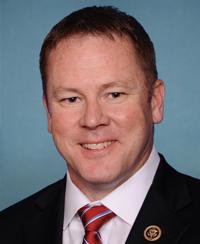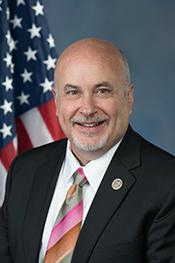H.R. 2731: Great Lakes Mapping Act of 2025
This bill, known as the Great Lakes Mapping Act of 2025, aims to direct the Administrator of the National Oceanic and Atmospheric Administration (NOAA) to conduct high-resolution surveys and mapping of the lakebeds of the Great Lakes. Here are the main components of the bill:
High-Resolution Mapping
The bill requires NOAA to complete a collaborative effort to survey and map the lakebeds of the Great Lakes by December 31, 2030. This mapping effort will focus on obtaining high-resolution data regarding the underwater landscape.
Elements of the Mapping Effort
The mapping effort will include several key activities:
- Completing a high-resolution map of the lakebeds of the Great Lakes.
- Collecting and processing high-resolution bathymetric data, which describes the underwater depth and features of the lakes.
- Using existing systems to catalog bathymetric data and other information about the lakebeds, both prior to and as a result of the mapping effort.
- Collecting, cataloging, and storing metadata generated during the mapping activities.
Coordination with Other Entities
NOAA is expected to work in cooperation with various stakeholders, including:
- The governors of states bordering the Great Lakes.
- Relevant state agencies responsible for policies regarding the Great Lakes or their lakebeds.
- The National Ocean Mapping, Exploration, and Characterization Council.
- The Lakebed 2030 Regional Initiative of the Great Lakes Observing System.
- Other regional ocean observing systems and any other relevant entities as determined by NOAA.
Data Management and Public Availability
NOAA will be required to make the parts of the high-resolution map that are completed available to the public within a reasonable timeframe during and after the mapping effort. Specifically:
- NOAA must provide public access to the complete high-resolution map and any additional information within 180 days after the mapping effort is finished.
- The data will also be incorporated into further products like nautical charts and resource mapping tools.
Funding
To support these efforts, the bill authorizes $50 million per year for each fiscal year from 2025 through 2029, with funds remaining available until the end of fiscal year 2030.
Legal Provisions
The bill states that it does not alter the processes or procedures for carrying out requirements outlined in existing laws related to coastal mapping.
Relevant Companies
- None found
This is an AI-generated summary of the bill text. There may be mistakes.
Sponsors
15 bill sponsors
-
TrackLisa C. McClain

Sponsor
-
TrackTom Barrett

Co-Sponsor
-
TrackJack Bergman

Co-Sponsor
-
TrackAngie Craig

Co-Sponsor
-
TrackWarren Davidson

Co-Sponsor
-
TrackDebbie Dingell

Co-Sponsor
-
TrackBill Huizenga

Co-Sponsor
-
TrackMarcy Kaptur

Co-Sponsor
-
TrackMichael Lawler

Co-Sponsor
-
TrackMark Pocan

Co-Sponsor
-
TrackBradley Scott Schneider

Co-Sponsor
-
TrackHillary J. Scholten

Co-Sponsor
-
TrackPete Stauber

Co-Sponsor
-
TrackHaley M. Stevens

Co-Sponsor
-
TrackRashida Tlaib

Co-Sponsor
Actions
2 actions
| Date | Action |
|---|---|
| Apr. 08, 2025 | Introduced in House |
| Apr. 08, 2025 | Referred to the House Committee on Natural Resources. |
Corporate Lobbying
0 companies lobbying
None found.
* Note that there can be significant delays in lobbying disclosures, and our data may be incomplete.
Potentially Relevant Congressional Stock Trades
No relevant congressional stock trades found.